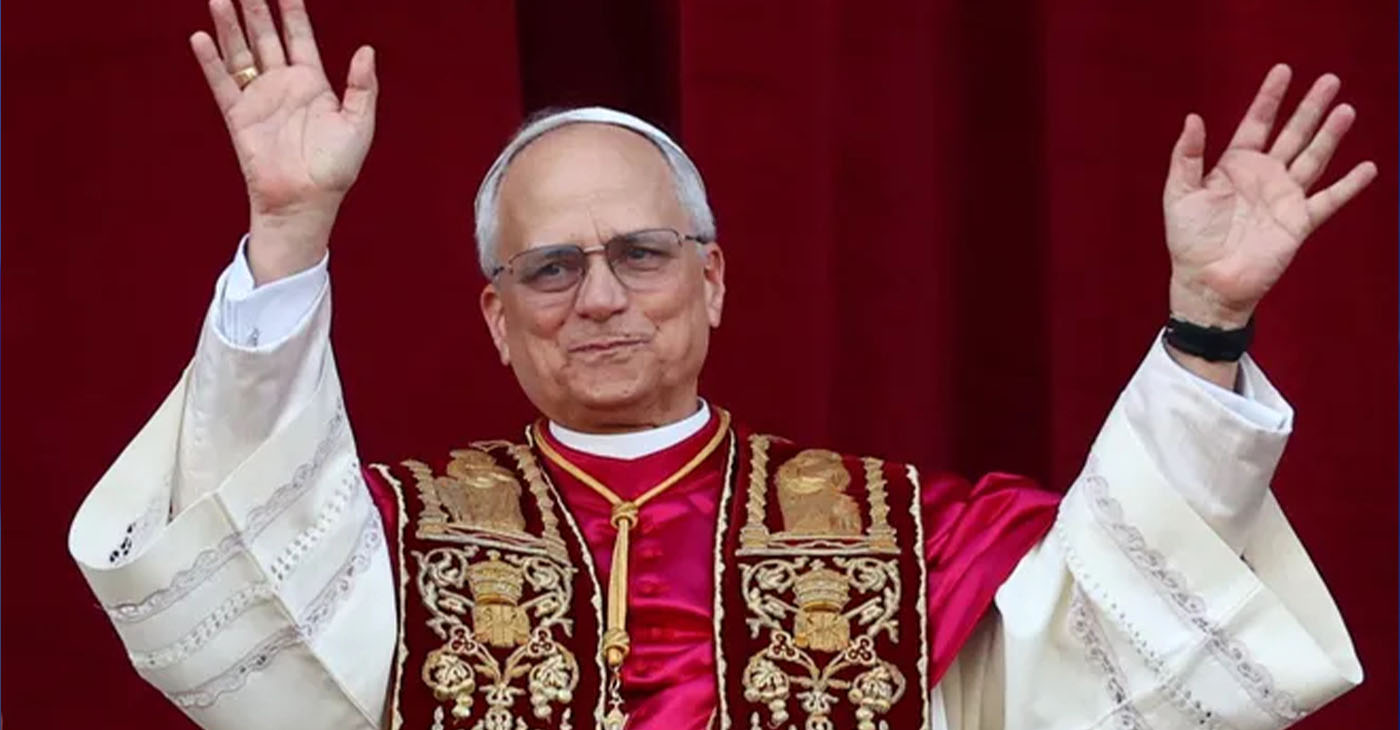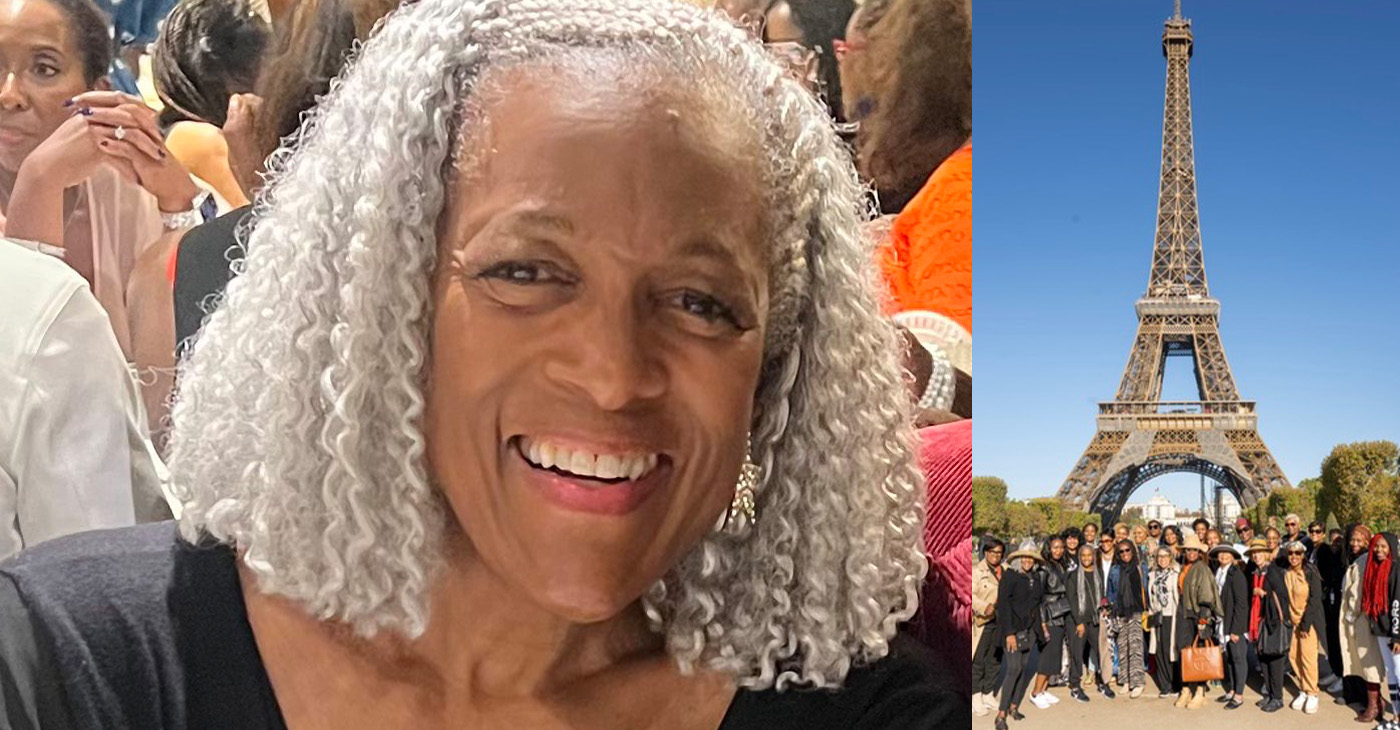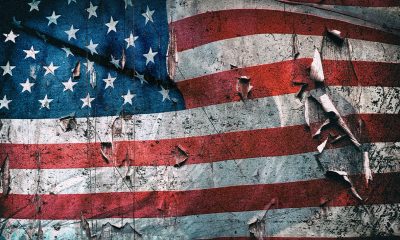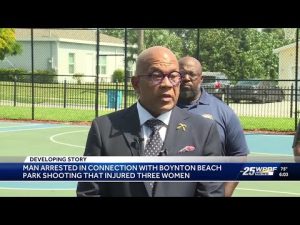World
Rebel Flag Controversy 1 in Long Line of Disputes Worldwide

In this photo taken Aug. 19, 2007 soccer fans show a German Nazi flag with a swastika during an Ukrainian League Championship soccer match between Dynamo Kyiv and Karpaty in Kiev, Ukraine. (Ukrinform via AP)
The Associated Press
BERLIN (AP) — Around the world, countries have long struggled with questions about flags similar to those faced by South Carolina, which is under pressure to remove a Confederate flag from its statehouse in the wake of the shootings that killed nine people at a historic black church.
Here’s a look at other flag controversies that have stirred strong emotions worldwide:
___
GERMANY
With the defeat of Adolf Hitler in 1945, the Nazi’s scarlet flag with a black swastika was banned in Germany and remains so today. The banner once hung from all official buildings in the Third Reich, was waved madly by the cheering crowds that supported Hitler and the Nazis, and was an integral part of military and other uniforms. Synonymous with the genocidal policies of the Nazis, the flag, the swastika and all other such symbols are illegal to display today, but remain favorites of neo-Nazis and other right-wing extremists, both inside Germany and around the world. After the war, the swastika was chiseled out of the talons of the stylized stone eagle that featured on many Nazi buildings, but today there is now a debate about whether the bird itself should go as well.
___
MIDDLE EAST
In the Middle East, the Islamic State group has co-opted the centuries-old “Black Banner” to use as its standard. It carries the message in Arabic: “There is no god but God; the Prophet Muhammad is the messenger of God,” which has been adopted and manipulated by many jihadis who claim to be enforcing God’s law. As Kurds in northern Iraq reclaim territory taken by the Islamic State group, they have been increasingly assertive in flying their own red, white and green flag rather than that of the Iraqi government, creating tension among Arabs living in Kurdish territory.
___
SOUTH AFRICA AND RHODESIA
Dylann Roof, the alleged South Carolina shooter, posted a picture of himself wearing a jacket with the flags of the now-defunct white-supremacist regimes in South Africa and Rhodesia, which is today Zimbabwe. Before 2000, small groups of whites in Zimbabwe continued to run exclusive clubs where the Rhodesian flag was flown but since the anti-white wave that came in conjunction with the country’s land reform program, it is not to be seen anywhere. The flag of today’s South Africa was designed in a spirit of reconciliation that aimed to unite the country’s racial groups after a protracted period of conflict. Introduced in 1994, when South Africa held its first all-race elections, the flag contains black, green and yellow, colors associated with one of the main emblems of the independence struggle. It also includes colors associated with flags from the time of white domination, including red and white.
___
CYPRUS
In the breakaway Turkish Republic of Northern Cyprus, the flag, a red crescent and star between two red stripes on a white background, is seen by many as symbolizing their wish for separate statehood from the internationally recognized Republic of Cyprus. Many in the Greek south, however, see the flag as a provocative symbol of an illegal state — and they’re rankled most by a massive painting of it on the side of the Pentadaktylos mountain range next to an inscription reading, “What joy it is for he or she who says ‘I am a Turk.'” Completed after Turkish Cypriots declared independence in 1983, the flag also lights up at night and can been seen from the other side of the border.
___
SPAIN
Some Spaniards still harbor deep divisions dating from the country’s 1936-1939 Civil War and use flags of that era to show support for the political ideals espoused by the war’s opposing sides. Extreme right-wing Spaniards protest while waving flags with Spain’s red-and-yellow colors emblazoned with a black eagle used by the regime of fascist dictator Francisco Franco. And leftists wave the red, yellow and purple flag of the Second Spanish Republic. Troops under Franco rose up against the elected Republican government. He ruled until his death in 1975.
___
IRELAND
The flying of rival British and Irish flags has triggered street clashes for decades in Northern Ireland and continues to deepen divisions today. Both the British Protestant and Irish Catholic sides of the community stake their competing claims to turf using flags: for Catholics the green, white and orange tricolor of the Republic of Ireland, and for Protestants, the red, white and blue Union Jack of the United Kingdom. Each summer, thousands of Irish tricolors and Union Jacks are erected in displays considered provocative to the other side’s residents living nearby. Some of Northern Ireland’s most intense and protracted rioting this decade was in response to the fate of a single British flag. After Belfast City Council narrowly voted in December 2012 to restrict the flying of the British flag at City Hall, a century-old practice, furious Protestants poured onto the streets to demand the return of the Union Jack’s year-round display. Mobs blocked roads, attacked politicians’ offices and homes, and fought running street battles with police. Two months of violence left more than 200 injured.
___
GREAT BRITAIN
In England, the national flag — the red-on-white cross of St. George — has had an image makeover in recent years. It was long shunned by liberal-minded Britons, regarded as the preserve of right-wing “Little Englanders” mired in nostalgia and a mistrust of foreigners. It was reclaimed partly as the flag of the England cricket, soccer and rugby teams, and partly as the standard of a new kind of non-toxic civic nationalism. It now flies from government buildings on April 23, St. George’s Day, which is increasingly celebrated after years of being ignored. But for many it remains a powerful symbol, associated with working-class nationalist sentiment. Last year, Labour lawmaker Emily Thornberry was forced to resign from a political post after she tweeted a picture of a house and van festooned with St. George’s flags. Newspapers mocked her and Prime Minister David Cameron accused her of sneering “at people who work hard, who are patriotic and who love their country.”
___
BALKANS
Last October, a European Championship soccer qualifying match between Serbia and Albania was suspended in Belgrade after a drone carrying an Albanian nationalist flag flew over the pitch, igniting clashes between players and fans. The banner included a map of “Greater Albania” that would comprise large chunks of neighboring states, including Serbia. A Serbian player pulled the banner down and Albanian players tried to protect it. In the resulting disorder, Serbian fans attacked Albanian players. Historic tensions between the countries were fueled by Kosovo, an ethnic Albanian-dominated region that declared independence from Serbia in 2008.
___
NEW ZEALAND, FIJI AND CANADA
The British Union Flag, or Union Jack, was once a part of many flags in countries that were once part of the British Empire, but is now only incorporated into a few. In 1965, Canada dropped the national Red Ensign flag, which had a Union Jack in the corner, in favor of today’s distinctive red and white Maple Leaf after years of heated debate.
New Zealand is holding a referendum next year on whether to change its flag, which features the Southern Cross constellation with the Union Jack in the top left corner. Some critics view the flag as an unwanted relic from a colonial past and too similar to the flag of neighboring Australia — which has no plans to drop the Union Jack from its banner. Others, including many combat veterans, remain deeply attached to it. New Zealand Prime Minister John Key has said he believes “this is the right time for New Zealanders to consider changing the design to one that better reflects our status as a modern, independent nation.”
The Pacific Island nation of Fiji is also preparing to remove the Union Jack from its flag, after the prime minister said it needs something that represents its future and not its colonial past.
Copyright 2015 The Associated Press. All rights reserved. This material may not be published, broadcast, rewritten or redistributed.
Activism
African Union Group to Award Rev. Dr. Amos Brown for Bringing Civil Rights Movement to Global Stage
Dr. Macaulay Kalu, secretary general of AU6RG, will present Dr. Brown with the Global Peace Builder Award. Other presenters include Rev. Dr. Freddie Haynes, senior pastor of Friendship West Baptist Church in Dallas; Oakland Mayor Barbara Lee, long-time advocate for appropriations to Africa as a congressmember; Rick Callendar, California-Hawaii president of the NAACP; Dr. Ike Neliaku, president and chairman of the Nigerian Institute of Public Relations; Pastor Ituah Ighodalo, head of the African Leadership Group and Ambassador Thompson and John William Templeton, founder of the Journal of Black Innovation National Black Business Month®.

By Carla Thomas and John William Templeton
On Aug. 31, the Third Baptist Church of San Francisco will mark its 173rd anniversary with an event steeped in history and global significance. This year’s commemoration, themed “Achieving Dr. King’s Promised Land Together,” will honor the lifelong achievements of Dr. Amos C. Brown, Sr.— a towering figure in the Civil Rights Movement — on a day that also observes the International Day for People of African Descent.
Brown will be recognized by the African Union’s organ for Africans abroad for ‘planetizing’ the civil rights movement gains at San Francisco’s Third Baptist Church, 1399 McAllister St., at 3 p.m.
The African Union, made up of 54 countries on the African continent, consists of five regions. It created a sixth region, the African Union Sixth Region Global (AU6RG), for the 400 million Africans living abroad. On Sept. 7, the second AU-Caribbean Community Summit occurs in Addis Ababa, Ethiopia.
Dr. Macaulay Kalu, secretary general of AU6RG, will present Dr. Brown with the Global Peace Builder Award. Other presenters include Rev. Dr. Freddie Haynes, senior pastor of Friendship West Baptist Church in Dallas; Oakland Mayor Barbara Lee, long-time advocate for appropriations to Africa as a congressmember; Rick Callendar, California-Hawaii president of the NAACP; Dr. Ike Neliaku, president and chairman of the Nigerian Institute of Public Relations; Pastor Ituah Ighodalo, head of the African Leadership Group and Ambassador Thompson and John William Templeton, founder of the Journal of Black Innovation National Black Business Month®.
Held during the 173rd anniversary of the church, the event called “Africa-America: Achieving Dr. King’s Promised Land Together” is a Diaspora-wide discussion led by Dr. Brown on what Martin Luther King, Jr. would say today.
Galvanized by the horrific 1955 slaying of Emmett Till, Dr. Brown’s journey in activism began in Jackson, Mississippi, where a neighbor, Medgar Evers, the NAACP’s first field secretary in that state, encouraged Brown to found the Mississippi NAACP Youth Council.
In 1956, Evers personally drove Brown to the NAACP convention in San Francisco, where Brown would first hear Dr. Martin Luther King Jr. speak. Brown became a prominent Freedom Rider, later attending Morehouse College and taking the only class Dr. King ever taught there. Thirteen years after Evers was assassinated in Jackson, Brown arrived at Third Baptist Church in 1976, serving with distinction for 49 years before his recent retirement. Under his stewardship, the church solidified its commitment to social justice and international unity.
His Excellency Rev. Ladi Peter Thompson, deputy secretary general for peace and security of AU6RG, said, “As a mentee of Medgar Evers, Freedom Rider and student of Dr. Martin Luther King Jr., Dr. Brown is the perfect authority for the young people of the Diaspora on achieving the prophetic goal that Dr. King foresaw in Memphis.”
Lady Dentaa Amoateng, founder of Grow, Unite, Build Africa (GUBA), will also announce that Dr. Brown is an honoree at the GUBA Award in Bridgetown, Barbados in November. The popular actress in Ghana and the United Kingdom will attend in person.
Dr. Lezli Baskerville, president/counsel of the National Association for Equal Opportunity in Higher Education, which includes 105 Historically Black Colleges and Universities (HBCUs) and 90 predominantly Black institutions (PBIs), invites its students, faculty, and alumni to attend or join remotely.
“HBCUs produced both Dr. King and Dr. Kwame Nkrumah and are the fountainhead for Diaspora unity,” said Baskerville.
Templeton, author of “ReUNION: State of Black Business, 22d edition,” said “Our movement will advocate the continuance of tariff-free treatment for Africa and the Caribbean; respect for African-American and African elected officials and the 13th, 14th, and 15th Amendments and the strengthening of educational and research connections across the Diaspora.”
Templeton said Black institutions have been at the forefront of defining the image of 1.5 billion Black people globally, a mission that is even more important as African youth will be the majority of the world’s young people in the coming decades.
ABOUT THIRD BAPTIST CHURCH
Founded on West Indian Emancipation Day on Aug.1, 1852, Third Baptist said in its annual report in 1858 that its sole purpose was the elimination of American chattel slavery and took an active role among the California abolitionists who convinced President Abraham Lincoln to issue the Emancipation Proclamation. The current sanctuary is constructed with wood from the Goodall Mansion, where President U.S. Grant stayed after leaving the White House, and is the last place where Dr. W.E.B. DuBois spoke before leaving for Africa in 1958.
Activism
Newsom, Pelosi Welcome Election of First American Pope; Call for Unity and Compassion
“In his first address, he reminded us that God loves each and every person,” said Newsom. “We trust that he will shepherd us through the best of the Church’s teachings: to respect human dignity, care for the poor, and wish for the common good of us all.” Newsom also expressed hope that the pontiff’s leadership would serve as a unifying force in a time of global instability.

By Bo Tefu, California Black Media
Gov. Gavin Newsom and First Partner Jennifer Siebel Newsom on May 8 issued a statement congratulating Pope Leo XIV on his historic election as the first American to lead the Catholic Church.
The announcement has drawn widespread reaction from U.S. leaders, including former House Speaker Nancy Pelosi, who called the moment spiritually significant and aligned with the values of service and social justice.
In their statement, the Newsoms expressed hope that the newly elected pope would guide the Church with a focus on compassion, dignity, and care for the most vulnerable. Newsom said he and the First Partner joined others around the world in celebrating the milestone and were encouraged by the pope’s first message.
“In his first address, he reminded us that God loves each and every person,” said Newsom. “We trust that he will shepherd us through the best of the Church’s teachings: to respect human dignity, care for the poor, and wish for the common good of us all.”
Newsom also expressed hope that the pontiff’s leadership would serve as a unifying force in a time of global instability.
“May he remind us that our better angels are not far away — they’re always within us, waiting to be heard,” he said.
Pelosi, a devout Catholic, also welcomed the pope’s election and noted his symbolic connection to earlier church leaders who championed workers’ rights and social equality.
“It is heartening that His Holiness continued the blessing that Pope Francis gave on Easter Sunday: ‘God loves everyone. Evil will not prevail,’” said Pelosi.
Activism
Retired Bay Area Journalist Finds Success in Paris with Black History Tours
In the late 90s, Stevenson finally realized her dream of living in Paris, now with her daughter. She started exploring the history of Africans in the city and would go on to teach others the same. Her business, which she named Black Paris Tours (BPT), received a significant boost when a family friend gave her a stack of cash and encouraged her to expand on the knowledge that she had only started to share with people she knew.

By Post Staff
There were two things Oakland-born, East Palo Alto-raised Ricki Stevenson always dreamed of:
- Going to New York as a newscaster to tell the true story of Blacks in America.
- Living and working in Paris one day.
Her dreams of life in Paris began when she was three years old and her mother, a former professional dancer, took her to see Josephine Baker perform. She was 11 when her parents took her to the Stanford University campus to meet James Baldwin, who was speaking about his book, “The Fire Next Time.” Ricki says that’s when she knew she’d one day live in Paris, “the city of light!”
But before that would ever happen, she had a tumultuous career as a newscaster across the country that was inspired by her family’s history.
Stevenson recalls marching with Cesar Chavez as he fought for labor rights for farm workers in California.
“Are we Mexican too?” she asked her parents. “No, but we will fight for everyone’s human rights,” they responded to her.
Ironically, Ricki’s paternal family roots went back to Greenwood, Oklahoma, infamous for the 1921 bombing of Black Wall Street. A time when Black people had oil wells, banks, and a thriving business community.
This background would propel her into a 25-year journalism career that gave her the opportunity to interview greats like President Jimmy Carter, PLO leader Yassir Arafat, James Baldwin, Rev. Jesse Jackson, UN Ambassador Andrew Young, Miriam Makeba, and the leaders of South African liberation movements.
A job offer from KCBS radio brought her back to the Bay Area in the 1980s. Then came the switch to TV when she was hired as a Silicon Valley business reporter with KSTS TV, working at the first Black-owned television station in northern CA (created and owned by John Douglas). Along the way, Stevenson worked as an entertainment reporter with BET; coproduced, with her disc jockey brother Isaac, a Bay Area show called “Magic Number Video;” lived in Saudi Arabia; worked as an international travel reporter with News Travel Network; and worked at KRON TV a news anchor and talk show host.
In 1997, Stevenson realized her dream of living in Paris with her young daughter, Dedie. She started exploring the history of Africans in the city and would go on to teach others the same. Her business, which she named Black Paris Tours (BPT), received a significant boost when a family friend, Admiral Robert Toney put a chunk of money in her hand. He said, “Ricki, my wife and I have been coming to Paris for 20 years, but in just two days with you and Dedie, we’ve learned and seen more than we ever did before.”
Years after BPT took off, Ricki met Nawo Carol Crawford and Miguel Overton Guerra, who she recruited as senior scholar guides for Black Paris Tours.
Guerra says he is proud of his work with Black Paris Tours in that it provides a wealth of information about the rich legacy of African and African American history and influence in Paris and Europe.
“I tend to have a feeling for history always being a means of a reference point backwards … you start to understand the history, that it isn’t just the United States, that it began with African people,” Guerra says.
He said that it’s been a pleasure to watch people learn something they didn’t know before and to take them through the city to key points in Black history, like hangout spots for writers like Baldwin and Richard Wright, restaurants in the busiest parts of Paris, the home of Josephine Baker and so much more.
Although the tours are open to all, Guerra hopes that those of African descent from all over the world can embrace that they don’t have to just stay where they are because movies and media have portrayed cities like Paris to be only white, it’s multicultural and accepting to all.
“We’ve been here, and we’ve been there, going way back when. And we shouldn’t be considered or consider ourselves to be strangers in any place that we go to,” he said.
Stevenson notes they’ve had 150,000 people take their tour over the years, with notables like former NFL quarterback Colin Kaepernick, Smokey Robinson, Steve Harvey, Miriam Makeba, and more.
Friends and former media colleagues of Stevenson compliment the BPT crew on their knowledge of the city and their ability to always keep it interesting.
“He [Guerra] just had a deep, deep wealth of knowledge and he was constantly supplanting information with historical facts and the like. I love that it was demonstrating and showing how Black people have thrived in Paris or contributed to the culture in Paris,” Candice Francis said.
She toured in the summer of 2022 and stated that in the two weeks that they visited Paris, BPT was the highlight of her trip. She shared that she was proud of Stevenson and the life she’d managed to manifest and build for herself.
“Even if you’re visiting Paris for the tenth time, if you haven’t taken the tour, then by all means, take it,” Francis emphasized.
Magaly Muñoz, Gay Plair and Paul Cobb also contributed to this story. You can book your own adventure with Black Paris Tours at www.blackparistour.com.
-

 Activism3 weeks ago
Activism3 weeks agoOakland Post: Week of November 12 – 18, 2025
-

 Activism3 weeks ago
Activism3 weeks agoIN MEMORIAM: William ‘Bill’ Patterson, 94
-

 Activism3 weeks ago
Activism3 weeks agoHow Charles R. Drew University Navigated More Than $20 Million in Fed Cuts – Still Prioritizing Students and Community Health
-

 Bay Area3 weeks ago
Bay Area3 weeks agoNo Justice in the Justice System
-

 #NNPA BlackPress3 weeks ago
#NNPA BlackPress3 weeks agoThe Perfumed Hand of Hypocrisy: Trump Hosted Former Terror Suspect While America Condemns a Muslim Mayor
-

 #NNPA BlackPress2 weeks ago
#NNPA BlackPress2 weeks agoTrump’s Death Threat Rhetoric Sends Nation into Crisis
-

 #NNPA BlackPress2 weeks ago
#NNPA BlackPress2 weeks agoLewis Hamilton set to start LAST in Saturday Night’s Las Vegas Grand Prix
-

 #NNPA BlackPress4 weeks ago
#NNPA BlackPress4 weeks agoProtecting Pedophiles: The GOP’s Warped Crusade Against Its Own Lies

















































